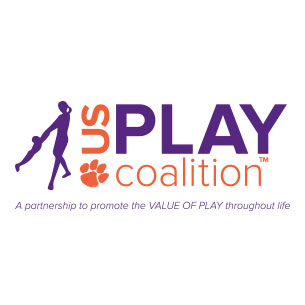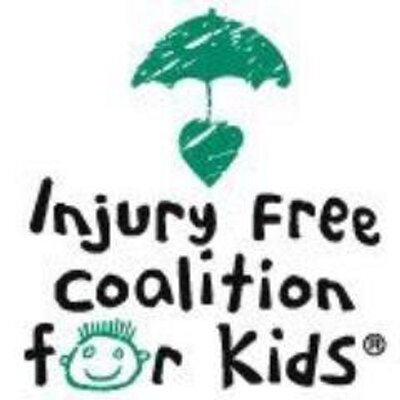Shutterstock image by Zdorov Kirill Vladimirovich
I recently read a great column by Jay Beckwith on the online Play and Playground News Center titled “Creating Conditions for Play.” His comments struck a nerve. After just finishing my last column related to some of the of the current playground surfacing issues and challenges we face in the USA, I was finding myself pondering the current status of the public playground movement and where we seem to be headed in the future. I agree with everything he says in this article. He has laid out an interesting course of action for us all to consider. If you have not read his complete article, I urge you to do so. There is, however, one thing I take some exception with and it is the reality of where we are today. We seem to have painted ourselves into a corner because of the constraints we have placed on ourselves or the limitations others seem to have put on our industry, as unintentional as the outcomes of their well-intended actions may have been.
The USA has some unique challenges of which other countries around the world do not have to concern themselves. This is true so long as their manufacturers do not intend to sell their product here in the USA. We have some Federal requirements placed upon our child’s products industry that may be just considered “Best Practices” by others, but they are the law in the USA. The way play equipment and playgrounds are designed in many other countries reminds me of the playground industry back when I was a young school age boy. The industry did just about anything they wanted. They relied on their own common sense to guide their design and risk assessment of their product. They modified their products when they became aware of design problems and the resulting injuries. Those were the good old days. Litigation was not of major concern as parents and children took personal responsibility for their actions. All parties understood there was risk of injury during play. Parents did not always exercise proper supervision of their child because they could often go to the local park of schoolyard unsupervised. Children often made errors in judgment resulting in personal injury. Only in the last 30 or 40 years has the cloud of litigation cast a dark shadow over our children’s ability to experience their individual relationship with their environment during free play. Their environment was open and unstructured, even natural for the most part, with little or no rules to limit personal experimentation.
I would love to be able to turn the clock back to 1988 and start again with the ASTM process knowing what we know today and with the technology we have at our disposal. Unfortunately this is not the movie, “Back to the Future.” We did a good solid job over the past thirty years building a solid foundation for injury prevention. We did this from the ground up just as a good builder constructs a home it starts with a proper foundation. We gathered injury data and began to analyze the how, where, who, and what was being injured. We created a sound database for the ergonomics of those most at risk of injury through the creation of a resource document for anthropometrics of the human body. This allowed us to design products that were user friendly and better designed for the intended user. We did a lot of research on child development. Maybe we should have placed more focus on understanding how play impacts human development throughout life? This earlier work, much of which was funded and developed by the U.S. Consumer Product Safety Commission (CPSC), set the solid foundation for the early standards work of the American Society of Testing and Materials (ASTM).
I draw the comparison of developing our current ASTM F1487 Standard and the playground standards development process to that of building a house. We must first have a solid foundation on which to build the house. Unfortunately we did not have a good set of plans for the long term future from which to start. We did, however, build a sturdy first floor of this structure with bricks and mortar provided by the CPSC. This solid foundation and first iterations of the ASTM F1487 and F1292 Standards thereby is making it more difficult to modify or mold into something more functional for the every changing needs of today. We did not have a clear vision and understanding for what this structure was going to look like and how it was going to assist with the developmental needs of all children when our initial work was finished. We also did not consider how we were going to maintain it or expand it if the need arose.
Today as I look at the house we have built, I see many problems that were unanticipated 25 years ago. It has become difficult, if not impossible, to expand this house to meet the needs of children today. Continuing with the house building analogy, there does not seem to be enough property for future expansion to address the growing needs of our playground family. The weight of current addition after addition is creating concern for the structural integrity of the house, and the foundation on which the couple of floors were built appears more and more obsolete for the future needs. The need to keep adding on and adding on is not going to stop, and building codes are restricting our ability to remodel, let alone expand, much further and meet the needs of the family.
This seems to be where we: the architects of the ASTM F1487 Standard are today with the deliberations on future directions of the ASTM F15.29 Subcommittee. In a way our standards have become like some of the overly restrictive building codes of yesterday. In many jurisdictions it is very difficult to get any type of variance when some new product or technology comes along. That being said, some code requirements for fire prevention, electrical requirements, and structural requirements are very important safety requirements that we would not wish to do without. Likewise eliminating sharp edges, crush points, head entrapments, and protrusions that impale and damage internal organs are equally important. It is when overzealous building codes and the building inspectors go too far by requiring carpet over tile for flooring or white paint over beige on our walls that these code requirements go too far.
I have somewhat discussed this in my solid foundation and home building analogy above. Jay Beckwith talks about “Infrastructure” in his article. Jay writes,
“As the movement (Creating Conditions for Play) begins to gain momentum, there will be a need for supportive infrastructure. In the past safety and access movements, that infrastructure was provided by ASTM Standards as well as state and federal laws. While these addressed the issues, as they were perceived at the time, we now realize that this legalistic approach is less than ideal as it prevents the flexibility needed to adapt to new insights, innovations, and technologies. The new movement must learn from this past experience and find ways to implement best practices without writing them into law.
"It is important to realize that for significant changes to occur on playgrounds, for them to look and function in new ways, the existing infrastructure will have to be addressed and updated. There have already been some movements in this direction. For example, in 2008 the European standard EN1176 was revised. Here’s a note I got from Mogen’s Tom Jensen regarding that change:
The 2008 revision of EN1176 seems to have created the platform for a significant shift of paradigm in that admissions to the necessity for being introduced to risk, the inherent risk in play, that accidents still exist and do happen, broken bones and the nonsense of comparing safety at work with safety at play, etc.
If you take a closer look at the European manufacturer’s web-sites, it’s clear that the standard itself is a lesser problem for designs and challenges provided, than the self-induced censorship by playground owners, “just to be on the safe side,” eagerly supported by playground inspectors without any idea about play but equipped with a measuring stick and a check list!
"It would be very interesting to consider what would happen if public agencies here in the States would begin to accept the EN1176 as equivalent to ASTM. Not only would this allow for the importation of some very interesting new play apparatus, but it would also allow an escape hatch for US companies to create new equipment outside the straight jacket of the ASTM Standard. Such a change could provide a significant boost to this industry.”
This is where I have to take some issue with the Beckwith’s approach for the future. We need to address all the things he has suggested, however, there is the need for cooperation among many government and legislative bodies to undo some of regulations we have in place. I have often heard it said that to change something so engrained in our everyday life, such as the CPSC Handbook for Public Playground Safety, it may take an act of Congress. In this case, I am afraid it might, since Congress created the CPSC and the CPSC’s Consumer Product Safety Improvement Act (CPSIA) of 2008. The requirements of this Act apply to all children’s consumer products, and therefore applies to all playground surfacing systems and playground equipment. I think this is where an “Act of Congress” might have to become reality if we are to ever put Beckwith’s suggestions into practice in today’s regulatory and litigious environment. I believe the Act has set the bar too low for what is considered a serious injury and what costs they might impose on the industry in an attempt to reduce or eliminate certain types of injuries.
If you have not read the CPSIA, I suggest you go online and download it for your reading pleasure. It is impacting all of us and in ways we are just beginning to understand. It ties our hands and stymies our creativity as decisions are being made based on the avoidance of potential liability. These decisions are, for the most part, business decisions which are easy to criticize by those who wish to push the creative envelope and yearn for the good old days before the proliferation of lawsuits and quick legal settlements. These decisions, for the most part, impact everyone’s bottom line and have become the easy answer for most entities. Unfortunately, the children are the ones who lose, because these decisions result in the elimination of many different and much needed innovative play opportunities being designed today.
Beckwith also discussed “Safety and Choice” when it comes to play areas of the future. He writes,
“We started this discussion talking about the role of safety and choice as being the fundamental conditions for play. More choice for kids will come more from educating parents and society about the need for play than by any new innovations in playground equipment and design. Improving safety can take many forms. For example, using mobile technology and social media to monitor children, can be both non-invasive and very effective thus allowing children more free roaming in their neighborhoods. A discussion of safety can also be part of the whole consciousness raising process whereby we take a critical look at our assumptions. For example, a sport-related injury is looked on as just a part of the game, but the same injury on the playground is to be somehow prevented by laws and standards.
“The goal of the new playground movement should be to increase children’s play choices and taking a broader, and more effective, approach to safety. The steps needed to achieve this are: 1) get the word out, 2) provide ready access to best practices and core information, and 3) leverage the existing successes and social media.”
Playground-related injuries will continue to occur regardless of how diligent an effort our stewards of the public play environment put forth. We, as a society, have to learn to accept many of these injuries as a part of everyday life, especially when it comes to child development. Research more than suggests the developmental benefits of risky play are too important to ignore. I think we could actually attain Beckwith’s vision once everyone accepts a certain frequency and severity of injuries as a reasonable outcome of child’s play regardless of the environment as long as the court system understands and supports the benefits of risky play even when some play results in injury.
When it comes to the public awareness aspect of Beckwith’s goals for the new movement, we will need to rely on the various government entities best suited to educate all of society. We have to encourage them to take up this challenge to educate the masses. I suggest the CPSC, the Centers for Disease Control and Prevention (CDC), and the State Departments of Health along with the Departments of Education are best equipped to meet this challenge. The real question is, are any of these groups willing to accept this challenge?
The public education aspect of Beckwith’s vision is not within the scope of most playground safety standards organizations with the exception of maybe the CPSC. That being said there is still a lot we can do help the cause and promote the value of free play. Once the courts system and the general public accept the fact that many injuries are part of childhood development and growing up, the various standards development organizations can focus on the true hazards within the public play environment. The key to the success of this vision for the future will require those responsible for managing these public areas to do their part in maintaining the areas free of known hazards.
Nest month I will finally be able to discuss the International Standards Organization Technical Committee 83 (ISO TC83) on Sport and Recreation’s N312 Report on Definition/Thresholds to be utilized by National and International Standards bodies within the scope of TC83. Playgrounds are within the scope of the ISO TC83. I am optimistic this terminology and definitions will bring clarity to our mission as international standards organizations and the architect responsible for the future standards and best practices of children’s play spaces.
1




















Well said
This is exactly the so of thoughtful and fact filled discussion we need. Thanks ken for you accuracy and honesty. Over the next few months let's add fuel to this fire!
Add new comment